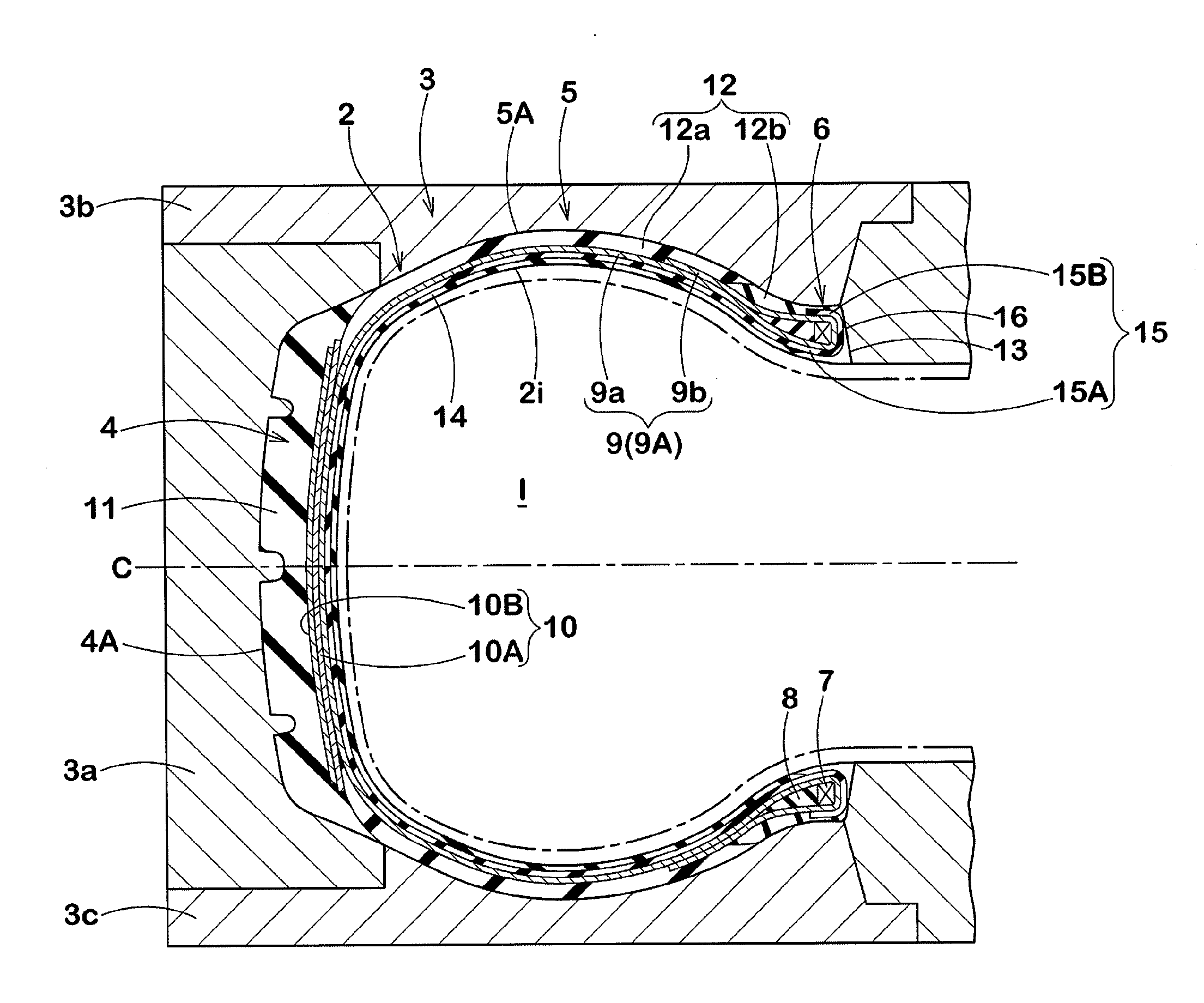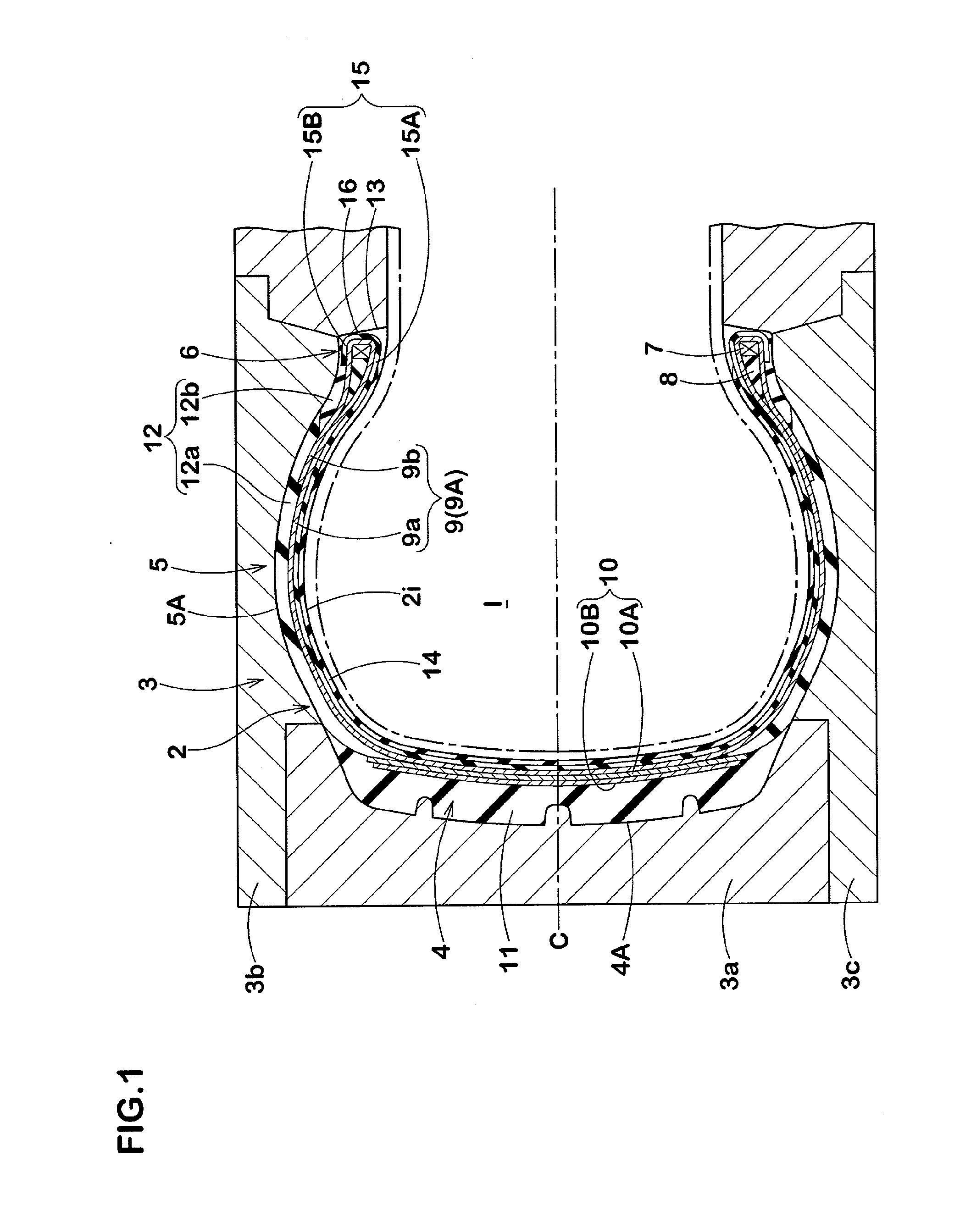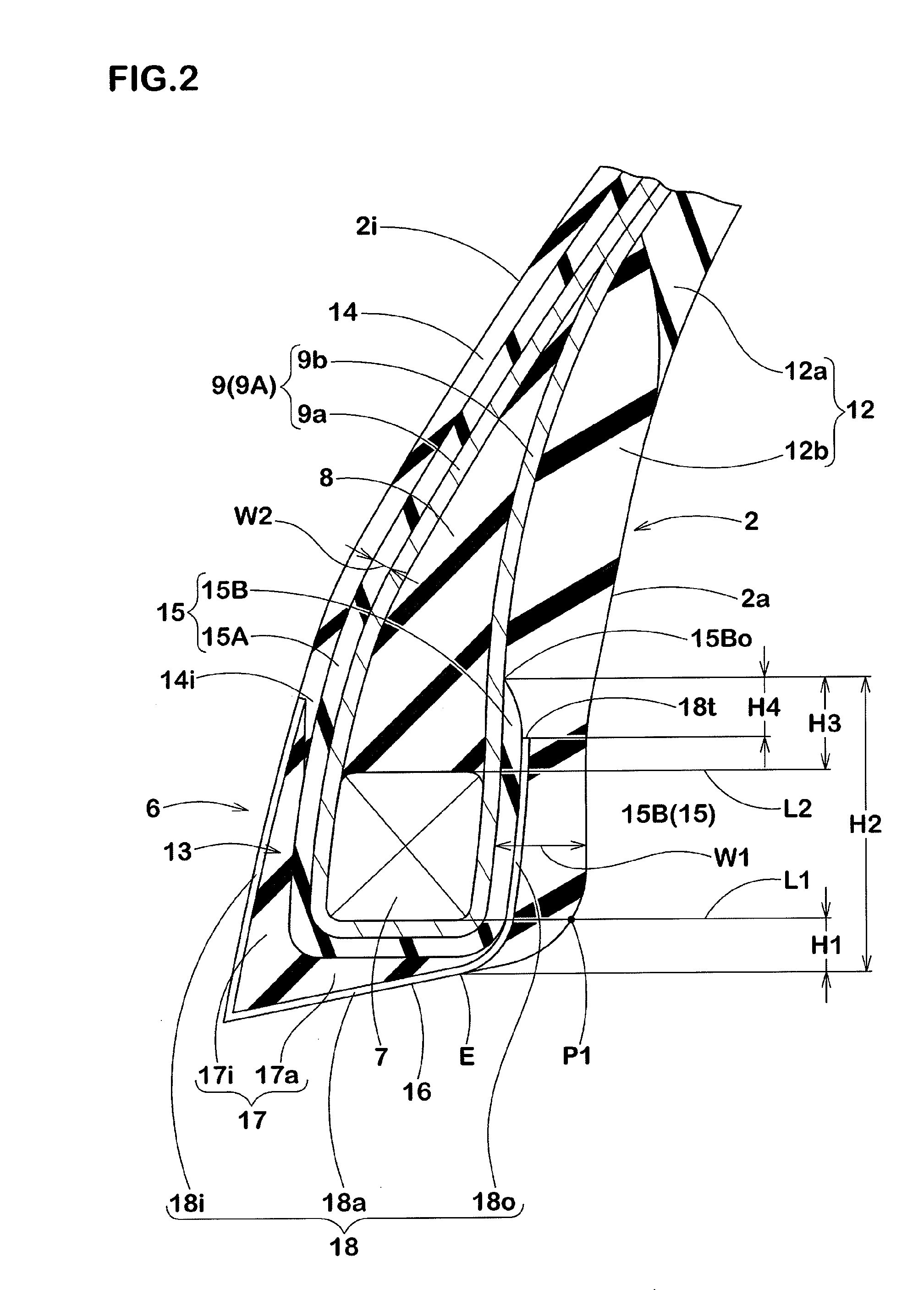Manufacturing method for pneumatic tire
a manufacturing method and tire technology, applied in the field of pneumatic tire manufacturing methods, can solve the problems of bare (b) being prone to arise, insufficient absorption of compressional force during vulcanization, and pneumatic tire deformation, etc., to achieve large compressive force, suppress sidewall rubber edge deformation, and increase the thickness of the bead portion
- Summary
- Abstract
- Description
- Claims
- Application Information
AI Technical Summary
Benefits of technology
Problems solved by technology
Method used
Image
Examples
embodiment
[0073]A raw cover (tire size: 195 / 65R15) having a basic structure shown in FIG. 1 and comprising a structure of a bead portion having a specification shown in Table 1 was formed; and a shape forming defection and the like during vulcanization was tested. Moreover, for comparison, the same tests were conducted with regard to a raw cover comprising a sidewall rubber edge disposed between a core outer point and a core inner point shown in FIG. 4(b) (comparative Example 1), and a raw cover comprising a sidewall rubber edge disposed more outward in the tire radial direction than the core outer point and an inner liner turned-up around a bead core as shown in FIG. 5 (comparative Example 2).
[0074]The test processes were as follows.
[0075]A thousand of each of the above-mentioned raw covers were formed in vulcanization by use of a mold, and a bare arising in a sidewall edge was checked up with the naked eye. Evaluation was made for a bare incidence; and the smaller the numeric values were, t...
PUM
| Property | Measurement | Unit |
|---|---|---|
| radial length | aaaaa | aaaaa |
| thickness | aaaaa | aaaaa |
| angle | aaaaa | aaaaa |
Abstract
Description
Claims
Application Information
 Login to View More
Login to View More - R&D
- Intellectual Property
- Life Sciences
- Materials
- Tech Scout
- Unparalleled Data Quality
- Higher Quality Content
- 60% Fewer Hallucinations
Browse by: Latest US Patents, China's latest patents, Technical Efficacy Thesaurus, Application Domain, Technology Topic, Popular Technical Reports.
© 2025 PatSnap. All rights reserved.Legal|Privacy policy|Modern Slavery Act Transparency Statement|Sitemap|About US| Contact US: help@patsnap.com



